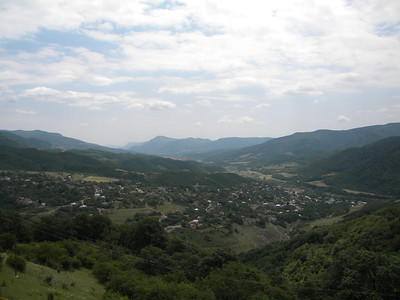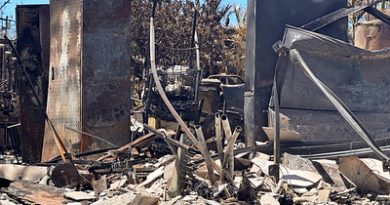Armenians Flee Nagorno-Karabakh After Azerbaijan’s Takeover
Neve Walker
Staff Writer
According to CNN , Azerbaijan’s offensive attack on September 20, in the Nagorno-Karabakh region resulted in a victory for Baku. The self-declared primarily Armenian republic of Nagorno-Karabakh will dissolve into Azerbaijan by next year, following a decree signed by the disputed region’s president. This conflict is considered by the International Crisis Group as the longest running post-Soviet Eurasia conflict.
Despite this seemingly sudden attack, nine months of Azeri influenced shortages on essential needs such as food, medication, and hygiene products created a dire humanitarian situation in the region. Azerbaijan also disrupted vehicular and pedestrian traffic to the region as well, writes Human Rights Watch.
The Azerbaijani victory resulted in a mass exodus of Armenians living in the area. This mass exodus marked the end of a decades long conflict, potentially ending the presence of ethnic Armenians in the region. Since the victory by Azerbaijan, around 50,000 Armenians have fled Nagorno-Karabakh to go to Armenia, reports NPR.
“Civilians in Nagorno-Karabakh are facing a dire humanitarian crisis and grave uncertainty about their future,” says Human Rights Watch Europe and Central Asia director Hugh Williamson. “Azerbaijani authorities have said that everyone’s rights will be protected, but that is hard to take at face value after the months of severe hardships and decades of conflict.”
The decree signed by the de facto Republic of Nagorno-Karabakh President Samvel Shahramanyan, called for all organizations and institutions in the Republic of Artsakh, the Armenian name for Nagorno-Karabakh, to cease by January 1, 2024, reports CNN. In the decree it directly states that the “[t]he Republic of Nagorno-Karabakh [will] cease its existence.”
This land has been highly contested since 1923, when the Soviet Union established the Nagorno-Karabakh Autonomous Oblast according to the Council on Foreign Relations. This 95 percent ethnically Armenian population was within the Azerbaijan Soviet Socialist Republic’s borders. In 1988, a resolution was passed regarding the control of the region. This legislature declared the intention of joining the Republic of Armenia, despite the location. This resolution was rejected by the Azerbaijani government and armed fighting commenced.
The Council on Foreign Relations further explains that when the USSR dissolved in 1991, Armenia and Azerbaijan declared their sovereignty as independent countries, yet the land of Nagorno-Karabakh was still being fought over. Without the USSR to keep the peace in the region, war broke out killing thirty thousand and displacing hundreds of thousands more. The war did not last long, however, and by 1994 Russia negotiated a ceasefire, known as the Bishkek Protocol. This led to the primarily Armenian-run Nagorno-Karabakh region to have a de facto independent government in Stepanakert. Yet despite this, the region still was reliant on Armenia for economic, political, and military support. This ceasefire was active until 2020.
In September 2020, armed combat broke out on the border of Azerbaijan and Nagorno-Karabakh. The Council on Foreign Relations reports that during this time more than seven thousand people were killed, both soldiers and civilians. Hundreds more were wounded. Both Armenia and Azerbaijan ignored pressure from the United Nations and other countries to hold peace talks and continued fighting. Despite several failed attempts by France and the United States, Russia finally brokered a deal in November 2020, ending the six-week war. With this deal Azerbaijan reclaimed most of the territory lost since the conflict, leaving Armenia with a sliver of land in Karabakh. This brings a decades-long conflict over a region with an even longer history to an end for the time being.
Image courtesy of Flickr



